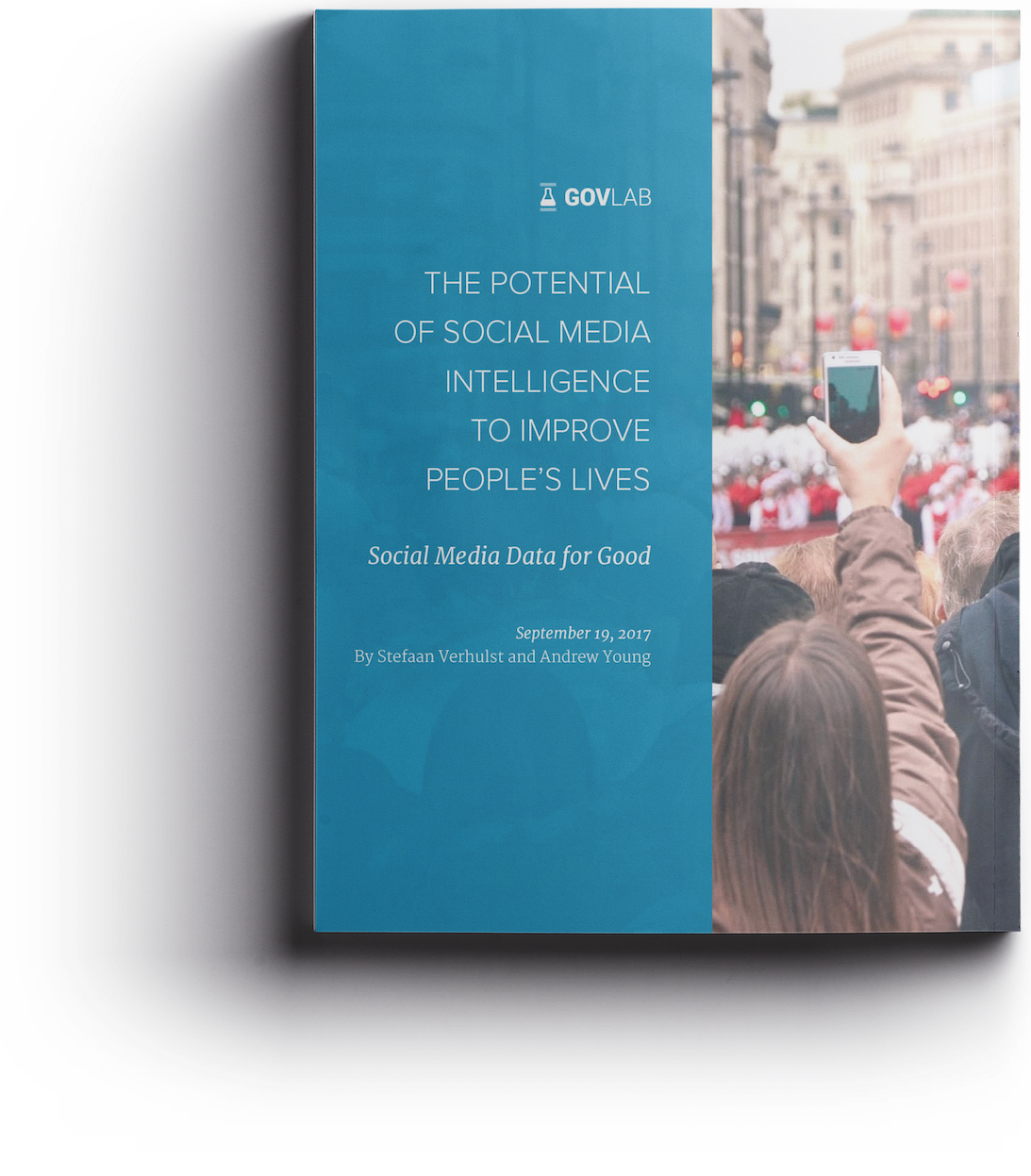
THE POTENTIAL OF SOCIAL MEDIA INTELLIGENCE TO IMPROVE PEOPLE’S LIVES
Social Media Data for Good
By Stefaan Verhulst and Andrew Young
The twenty-first century will be challenging on many fronts. From historically catastrophic natural disasters resulting from climate change to inequality to refugee and terrorism crises, it is clear that we need not only new solutions, but new insights and methods of arriving at solutions. Data, and the intelligence gained from it through advances in data science, is increasingly being seen as part of the answer. This report explores the premise that data—and in particular the vast stores of data and the unique analytical expertise held by social media companies—may indeed provide for a new type of intelligence that could help develop solutions to today’s challenges.
In this report, developed with support from Facebook, we focus on an approach to extract public value from social media data that we believe holds the greatest potential: data collaboratives. Data collaboratives are an emerging form of public-private partnership in which actors from different sectors exchange information to create new public value. Such collaborative arrangements, for example between social media companies and humanitarian organizations or civil society actors, can be seen as possible templates for leveraging privately held data towards the attainment of public goals.
Five Key Value Propositions
SITUATIONAL AWARENESS AND RESPONSE
Data held by social media companies can help NGOs, humanitarian organizations and others better understand demographic trends, public sentiment, and the geographic distribution of various phenomena. In doing so, data contributes to improved situational awareness and response.
Case studies:
- Facebook Disaster Maps
- Tracking Anti-Vaccination Sentiment in Eastern European Social Media Networks
- Facebook Population Density Project
KNOWLEDGE CREATION AND TRANSFER
Widely dispersed datasets can be combined and analyzed to create new knowledge, in the process ensuring that those responsible for solving problems have the most useful information at hand.
Case studies:
- Yelp Dataset Challenge
- MIT Laboratory for Social Machines’ Electome Project
- LinkedIn’s Economic Graph Research Program
PUBLIC SERVICE DESIGN AND DELIVERY
Data Collaboratives can increase access to previously inaccessible datasets, thereby enabling more accurate modelling of public service design and helping to guide service delivery in a targeted, evidence-based manner.
Case studies:
- Facebook Future of Business Survey
- Easing Urban Congestion Using Waze Traffic Data
- Facebook Insights for Impact Zika
PREDICTION AND FORECASTING
New predictive capabilities enabled by access to social media datasets can help institutions be more proactive, putting in place mechanisms based on sound evidence that mitigate problems or avert crises before they occur.
Case studies:
- Tracking the Flu Using Tweets
- Predicting Floods with Social Media Metatags
- Predicting Adverse Drug Events by Mining Health Social Media Streams and Forums
IMPACT ASSESSMENT AND EVALUATION
Access to social media datasets can help institutions monitor and evaluate the real-world impacts of policies. This helps design better products or services, and enables a process of iteration and constant improvement.
Case studies:
- Sport England’s #ThisGirlCan
- Using Twitter Data to Analyze Public Sentiment on Fuel Subsidy Policy Reform in El Salvador
- Using Twitter to Measure Global Engagement on Climate Change
Existing research on data collaboratives is sparse, but a number of recent examples show how social media data can be leveraged for public good. These include Facebook’s sharing of population maps with humanitarian organizations following natural disasters; predicting adverse drug reactions through social media data analysis in Spain; and the city of Boston’s use of crowdsourced data from Waze to improve transportation planning. These examples and 9 additional cases are discussed in the full report.
READ THE REPORT EXECUTIVE SUMMARYWITH SUPPORT FROM


